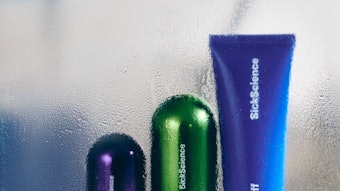Skin brightening continues to be a trend gaining traction in Western beauty markets. Another transplant from products that have long been popular in the East, skin brightening products help even skin tone and highlight skin.
Addressing this trend, Euromonitor International senior research analyst Svetlana Uduslivaia wrote an analyst insight post titled "Imported Brands Meet Demand for Skin Brightening in Canada," which, as she explains, “continues to explore the impact of growing ethnic diversity in the marketplace in countries driven by immigration, the evolution of beauty care remains in the spotlight.”
Uduslivaia writes, “In Canada, immigration continues to be skewed towards the countries of Asia Pacific, fueled by source markets like China and the Philippines. In fact, official sources indicate that Canada issued a record number of visas to Chinese nationals in 2012, with the total number of new permanent residents standing at 32,990 that year.
“Whitening is an important feature of facial care products in the Philippines and China across all age groups. In the Philippines, in 2012, facial moisturizers with whitening benefits accounted for a 65% value share of all moisturizers, while facial cleansers with whitening benefits accounted for a 47% share of overall sales of cleansers. In China, skin whitening products held a 37% value share of face masks in 2012, the highest penetration in any category that year.
“Although skin brightening and dark spot correction features have been increasingly the focus of product development from many mainstream brands in Canada, these do not satisfy demand from the growing number of women from Asia. The emphasis on anti-aging excludes a large number of younger consumers, with product efficiency also questioned. This has resulted in Asian consumers turning to ethnic retailers, which offer a wide range of imported brands to meet demand.
“Ethnic retailers in Canada carry a large number of imported brands and products with whitening benefits. For example, the T & T Supermarket chain (operated by Loblaws Cos) dedicates significant shelf space to such products. T & T’s best-selling products include My Beauty Diary branded masks, including those with whitening/brightening benefits. The brand is marketed by the Taiwanese-based President Pharmaceutical Corp and is one of the top-selling mask brands in Taiwan. At T & T supermarkets in Canada, masks come mostly in packs of 10 and retail for C$17.99. The range with skin whitening/brightening benefits includes Black Pearl (hydrating and whitening) and Red Wine (anti-oxidation, brightening, firming). The brand also includes products with anti-ageing, oil control, pore constringing and other benefits.
“T & T also offers another Taiwanese mask brand from the same manufacturer, Face Q. The range offers a variety of benefits, including whitening/brightening as well as forming and anti-ageing properties. The packaging is unlike that of many mainstream brands, featuring girlish cartoon-like characters.
“The popularity of the My Beauty Diary brand, as well as other imported brands, among Asian shoppers at T &T supermarkets is reflected in the retailer’s further planned expansion of the shelf space dedicated to a wider range of imported Asian brands of beauty care so as to ensure a good stock of fast-selling products, such as skin care with whitening benefits.
“While the Canadian beauty care market is expected to see a positive performance going forward, slow population growth and a high level of saturation are expected to have an adverse impact on the overall pace of growth. In these conditions, addressing the needs and demands of the rising number of female shoppers of Asian background will continue to represent an opportunity for retailers and brand manufacturers to increase sales and drive categories forward, especially in skin care. Current Euromonitor International forecasts expect retail sales of face masks in Canada overall to post a fairly modest growth, supported chiefly by the premium segment. Exploring opportunities in sheet masks, including those with brightening benefits, might help to give the category further boost in the coming years.
“It is worth noting that Canada is not the only Western market which is witnessing growing demand for imported Asian brands. South of the border, for instance, in the U.S., Taiki Cosmetics has been reporting growth in demand for its own face masks.
“As many mainstream retailers have been increasingly stocking products to appeal to ethnic shoppers across a number of consumer goods categories, beauty care will be the next logical step. However, adding such SKUs needs to go hand in hand with knowledgeable staff ‘fluent’ in product features and benefits to drive customer interest, product understanding and purchases, also drawing in mainstream consumers. Consumer education and awareness can go a long way to supporting demand and sales. Furthermore, taking a ‘leaf’ out of Asian players’ books, brand manufacturers can explore opportunities in product formulations, ingredients and formats (such as mask sheets) to increase consumer interest and appeal to the growing Asian demographic as well as the mainstream Canadian consumer,” Uduslivaia concludes.










